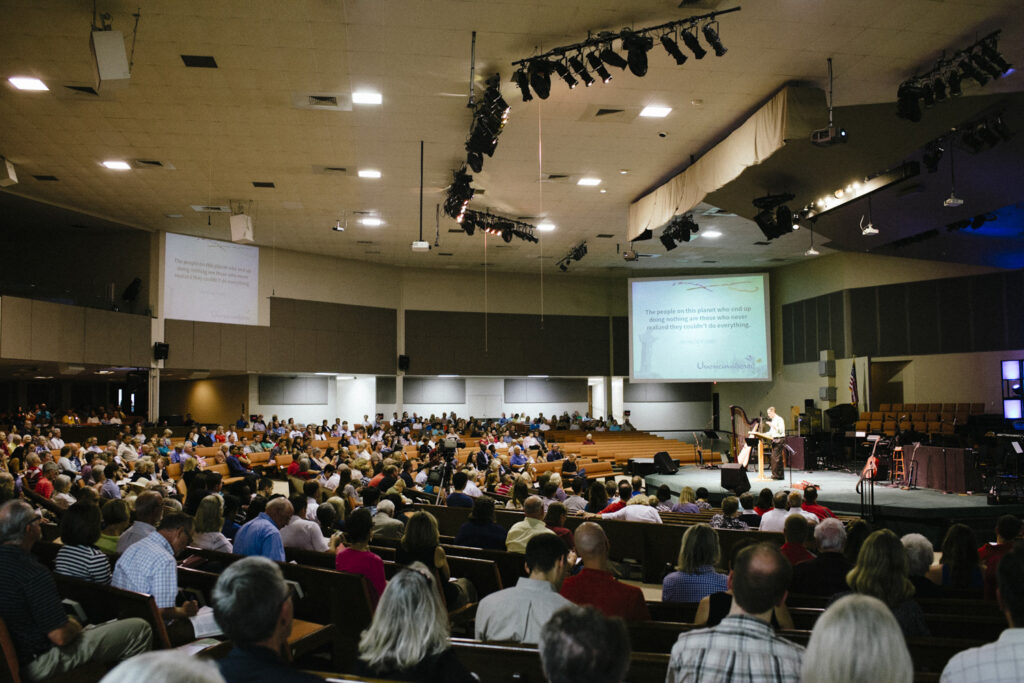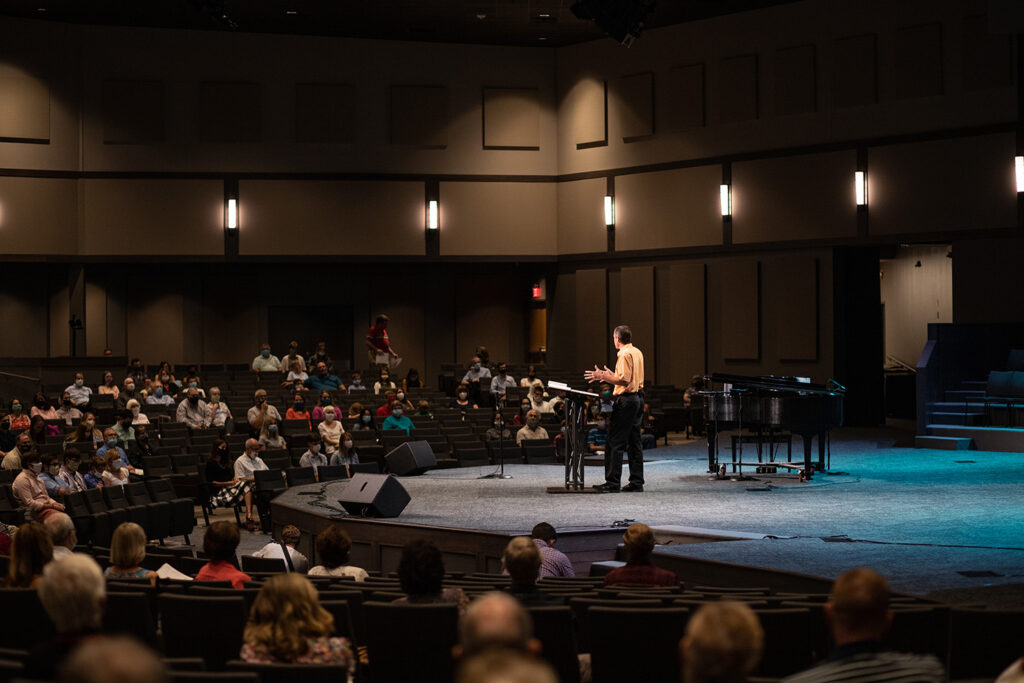My biggest issue was just with some of the slap back and flutter echoes within the room. You would sit in various corners of the room and it was very difficult to understand what was being said. Intelligibility was just not the best
- Brent Dye
Grace Polaris Church was burdened with a lack of speech intelligibility, heightened echoes, low frequency build up, and a less-than-desirable 80’s look. But the solution wasn’t as simple as putting panels all over the walls. Conwed worked with them to achieve the perfect acoustic and aesthetic solution for their issues by working with their Audio Engineer, Brent Dye.
When acousticians in the past dealt with cathedrals, they were tasked with the seemingly impossible job of working around heavy pillars, sharp corners, and vaulted ceilings. However, contemporary churches have their own set of acoustic issues which differ quite a bit from historic cathedrals. Modern worship centers often have a semi-circle, auditorium-like design, as mentioned in Acoustical Design for Contemporary Churches. This design proves to be much more acoustically friendly, yet tends to hold “dead spots” in odd locations.
So, flutter echoes, dead spots, slap-back, why are there suddenly even more acoustical problems to deal with? As per usual, they all count as noise. Each is a different kind of reverberation or echo, effecting communication negatively. But they don’t all get the same solution.Pre-renovation, the Grace Polaris worship center did have some acoustic solutions in place, but they didn’t work as well as intended. Executive Pastor, Jim Augsperger, described it sounding like a “tin box,” while Dye detailed what exactly they were dealing with.


There were some acoustic panels on the wall. We had several 4x8 panels that went around the rear wall. I believe those were roughly two inches thick and it helped mid and the high end type of information be absorbed. We had problems with low frequency build ups, particularly in the corners and under the balcony. And that made things very difficult to hear under there. We also had a lot of echo returning to the stage. So if somebody stood here and clapped, they would hear that coming back from those rear walls about two and three different times.
- Brent Dye
In short, careful planning. Grace Polaris has already tried out putting panels everywhere possible. That did technically reduce the general noise in their space, but the solution as a whole did not consider the specific needs of each area, or their shape and size.
Don’t worry, no acoustic solution manufacturer worth their salt would expect you to do all the math and planning to deal with a problem like this. That’s our customer service team, and the world of acousticians both exist!
Knowing that simply installing panels on every surface won’t necessarily get you the results you want, is all you really need to know to get started. Knowing your terminology to better understand your space is what comes next!
These are commonly thought of as the same thing, but are functionally different. An echo is a distinctly separate noise from the original, due to how far that sound wave is traveling before being heard again; at least 55 feet.
Reverberations are more like the typical noise you think of in a loud room. Because the distance the wave travels is less than 55 feet, you are hear the reverberating noise before the original sound is even complete. In an extreme scenario, you could be hearing that noise multiple times before the original sound completes.
When faced with serious reverberation, like in a loud restaurant, many people resort to googling, “sound proofing panels”. Maybe that’s how you found this page. It is important to understand the difference between the two though.
If excessive noise is absorbed in one room, preventing reverberations, that doesn’t mean that zero sound makes its way to the next room over, it just means that the first room is acoustically tuned.
If your goal is to prevent all sound from escaping room 1 in the first place, that would be sound-proofing by blocking the noise, not absorbing. Even still, a sound-proofed room can be acoustically untuned and full of noise. Doing both is possible, but they are two different treatments.
In acoustically complex environments, such as a recital hall, you may not even want to absorb or block sounds, you just want to ensure it’s bouncing around to the right places. This is where sound reflecting comes into play.
Reflective products are the opposite of absorbing products, instead to trapping noise they just point them into a new direction. If you’re the performer in this big recital hall, you want everyone to be hear your music the way it’s intended. Depending on the shape and size of the space, reflective products may be need in order to bounce sounds to the areas that would otherwise not be hit by some of the sound waves
We understand this is a lot to digest. Not only is noise something to be mindful of and soak up, now you have to think about it 3D! To keep it simple though, here’s a flow chart to selecting the right product type.
Still not sure? Conwed not only makes products tailored to these extra specialized acoustical functions, but also staff that can help advise on usage and placement.
Just remember all these fun facts for the next time someone says “man this place is so loud”. Conwed will handle the rest ; )

1445 Holland Rd
Maumee, OH 43537